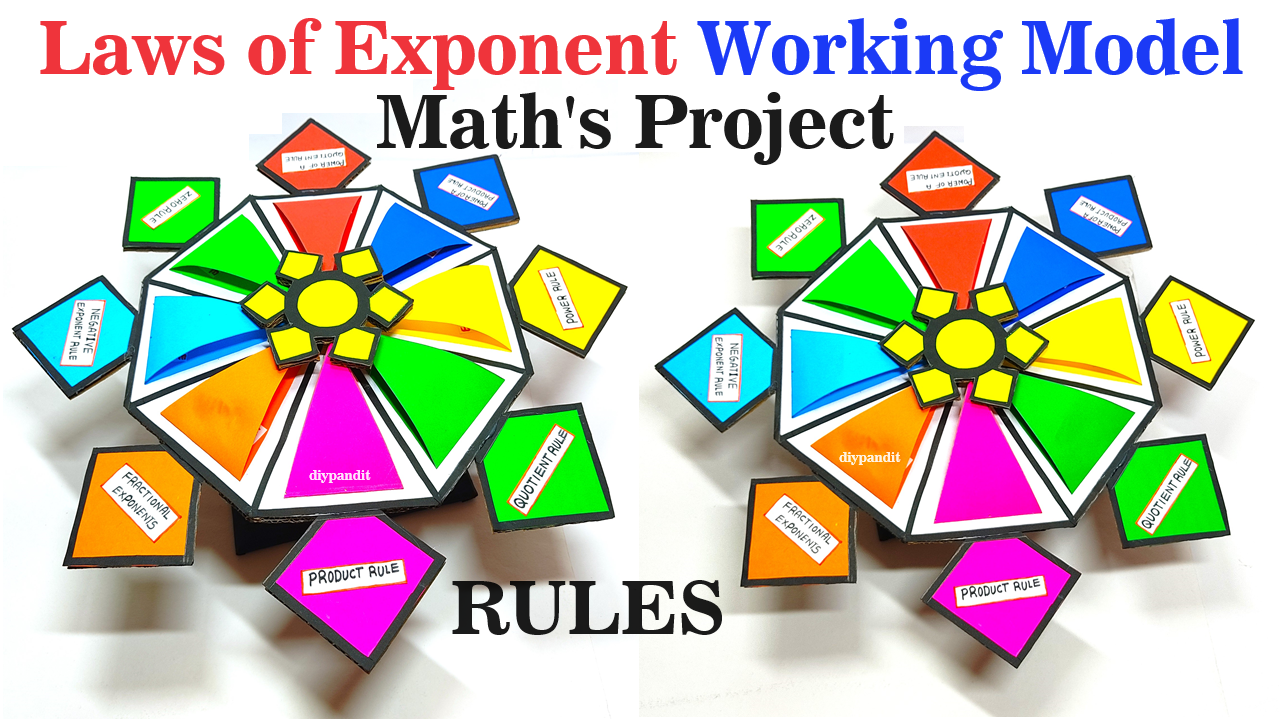The laws of exponents, also known as exponent rules, are mathematical guidelines that describe how to manipulate and simplify expressions involving powers of numbers or variables.
These rules are foundational in algebra and are used extensively in higher mathematics, science, engineering, and computer science.
A working model of the laws of exponents provides a concrete way to explore and understand these rules through interactive and visual means, making the learning process more effective and enjoyable.
Creating a working model to demonstrate the laws of exponents using cardboard and color paper can be a fun and educational project.

Here’s how you can make it:
Materials Needed:
- Cardboard or foam board
- Colored paper (different colors)
- Ruler
- Pencil
- Scissors
- Glue or tape
- Marker
Steps by Steps Video Instructions :
1. Prepare the Base:
- Take a piece of cardboard or foam board as the base for your model.
- Cut it into a large square or rectangle to serve as the display area.
2. Define Exponents:
- Cut out rectangles or squares from colored paper to represent the base numbers.
- Write numbers on these shapes to represent base numbers (e.g., 2, 3, 4, etc.).
3. Create Exponential Expressions:
- Cut out smaller rectangles or squares from colored paper to represent the exponents.
- Write exponents on these shapes (e.g., 2², 3³, 4⁴, etc.).
4. Arrange Base Numbers and Exponents:
- Arrange the base numbers and exponents on the base to create different exponential expressions.
- For example, place the base number 2 next to the exponent ² to represent 2².
5. Display Exponential Expressions:
- Use markers to label each exponential expression (e.g., “2² = 4”, “3³ = 27”, etc.).
6. Demonstrate the Laws of Exponents:
- Create models to illustrate each of the laws of exponents:
- Multiplication Rule: Create two exponential expressions with the same base. Multiply their base numbers and add their exponents.
- Division Rule: Create two exponential expressions with the same base. Divide their base numbers and subtract their exponents.
- Power Rule: Create an exponential expression with an exponent raised to another exponent. Multiply the exponents.
- Zero Exponent Rule: Create an exponential expression with any base raised to the power of zero. The result is always 1.
- Negative Exponent Rule: Create an exponential expression with any base raised to a negative exponent. Invert the base and change the exponent to positive.
7. Label and Explain:
- Write labels next to each model to explain the law of exponents it represents.
- Provide explanations of each law of exponents on the base or on separate cards.
8. Decorate (Optional):
- Use markers or additional colored paper to add decorative elements to your model.
- For example, draw arrows to show the movement of numbers or use different colors to distinguish different parts of the model.
9. Demonstrate:
- Use your model to explain each law of exponents to others.
- Encourage interaction by allowing viewers to manipulate the base numbers and exponents.
10. Display:
- Display your working model at the math exhibition or in the classroom where it can be easily seen by others.
With this model, you can effectively demonstrate and explain the laws of exponents in an engaging and interactive way.

